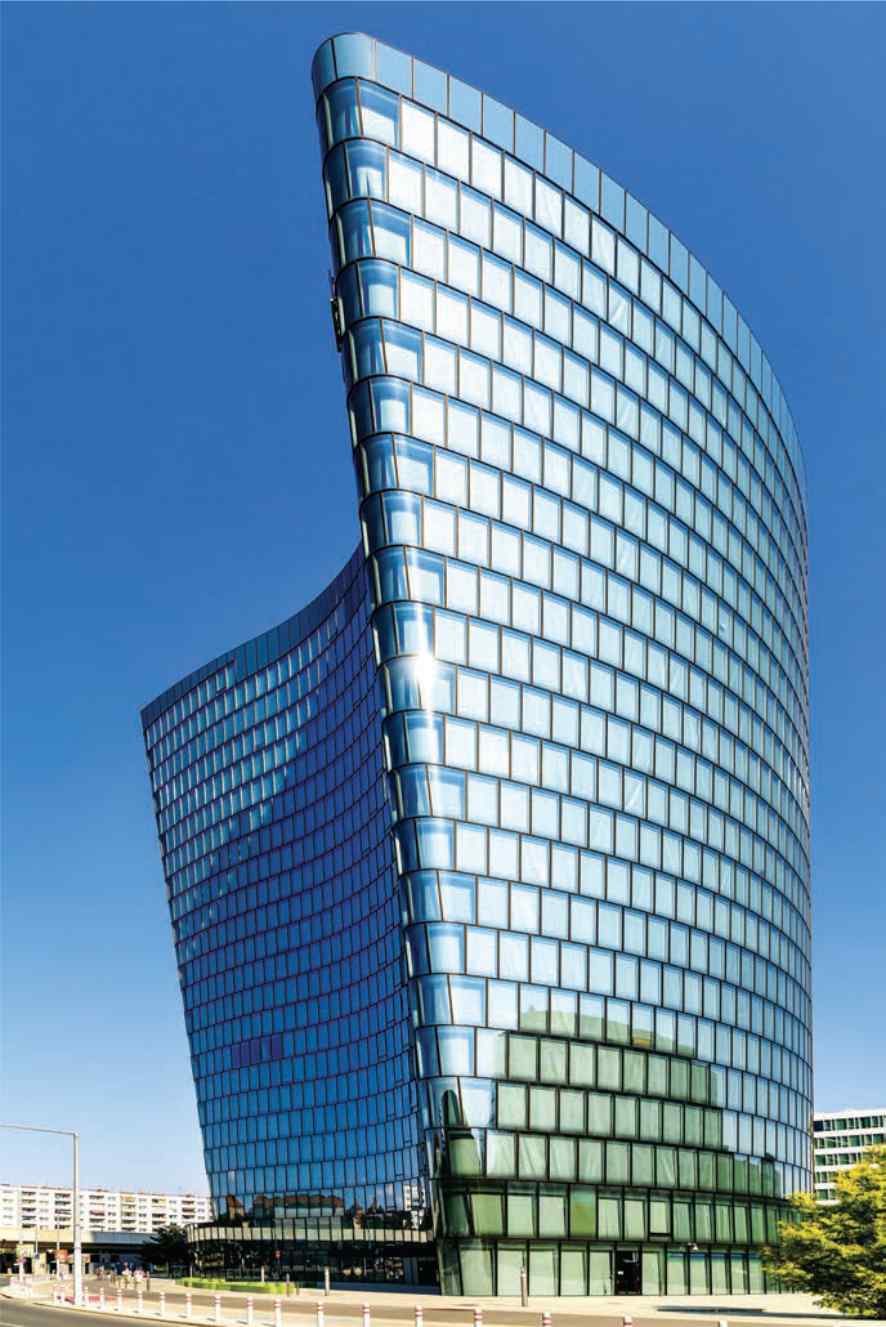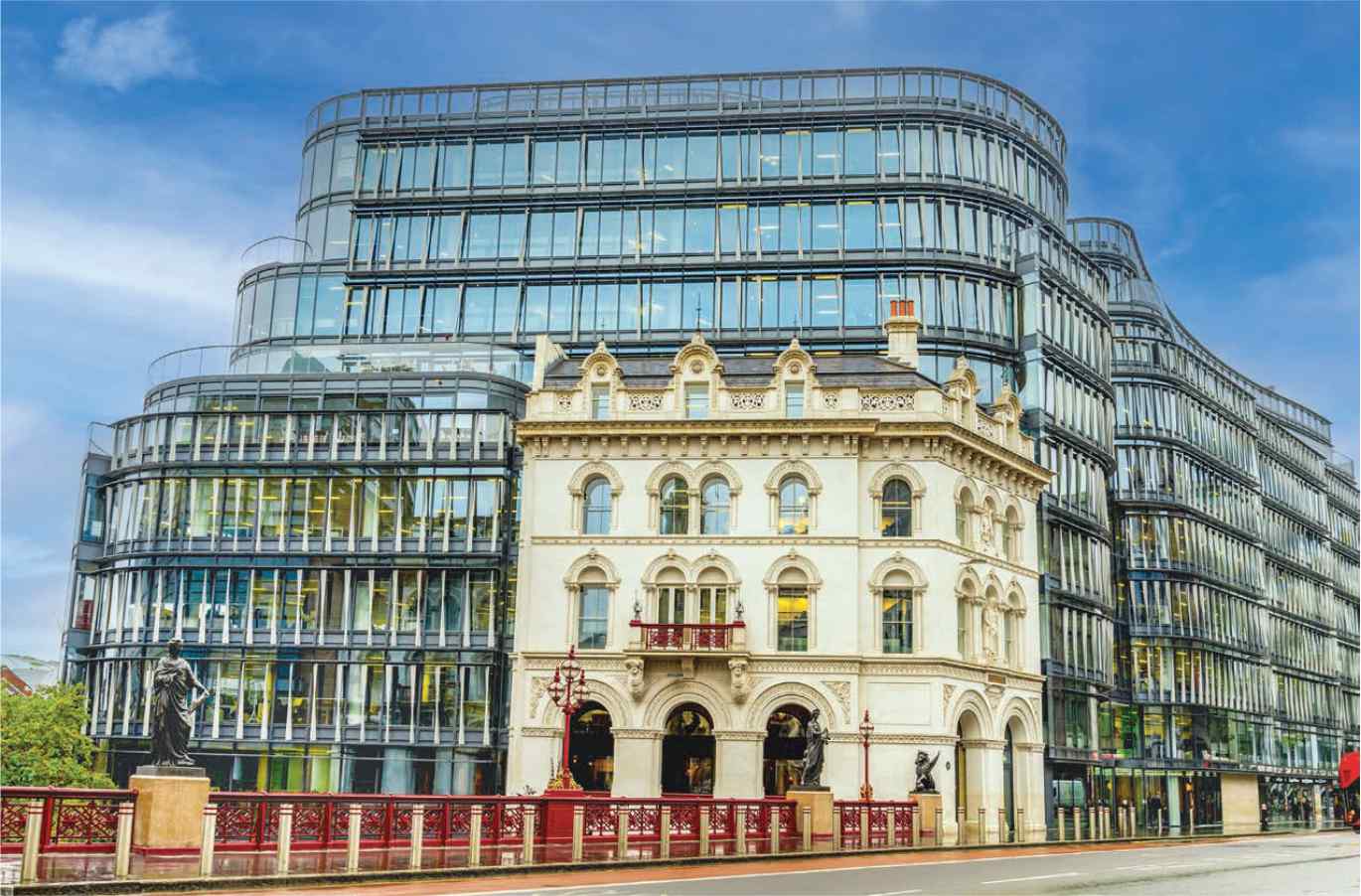Sustainability Entails More Than Just Energy Efficiency
Super Spacer® by Edgetech Europe exemplifies durability in insulating glass, showcasing how sustainability extends beyond energy efficiency
Vandaglas Döring is one of the world’s leading manufacturers of curved glass panels involving sophisticated geometries.
“Sustainability in terms of longevity is becoming increasingly important for our customers,” Lenz said, adding: “Nothing illustrates this better than functional products that can be used to achieve prestigious referenc properties and where we have had no complaints, even years after thei construction.”
Curved panes of glass have higher levels of flexural rigidity depending on their curvature. Therefore, curved insulating glass units can be exposed to higher climatic loads, placing even greater stresses on the edge seal compared to flat insulating glass units.
“The sustained integrity of the edge seal is known to be crucial for the tightness of insulating glass units,” stated Christoph Rubel, European Technical Manager at Edgetech Europe.
“A flexible spacer such as the Super Spacer TriSeal Premium Plus used by Döring offers 100 per cent recovery capability. It can perfectly offset the temperature-related expansions of glass and frame materials and reduced the stresses on the edge seal,” he said.

The Vienna office tower Hoch Zwei features a distinctive convex-concave shape which people have likened to sails or fans. Architect Dieter Henke of Henke Schreieck jokingly refers to them as “croissants.” Completed in 2008, this 80-metre landmark stands at the entrance to one of Vienna’s most ambitious urban development projects.
Since 2004, a car-free and sustainable district called Viertel Zwei has been developing, spanning an area of 1,60,000 square metres, situated close to the Krieau trotting track, the Ernst Happel Stadium, and the Green Prater in Vienna, Austria.
In addition to office spaces, apartments, student residences, and hotels, a lake, 13,000 square metres of green space, catering establishments, nursery schools, and a school create an urban living and working environment that already accommodates in excess of 7,000 people.
Atypically for high-rise constructions, the 23-story building tapers downwards instead of upwards. The crescent-shaped floor plan of the building facilitates the flexible breaking down of spaces arranged around the central core. This design feature helps avoid the appearance of endless office corridors that are typically found in such buildings.
The 13,500 square metres of glass facade in Viertel Zwei combines transparency and light permeability with excellent thermal insulation and sun protection properties.
Döring supplied a total of 132 model panes, each coming in six variants and in sizes of up to 1500 x 4000 mm in order to shape the two rounded corners covering an area of 2000 square metres.
The cylindrical curved double glazing is constructed from 12 mm of laminated safety glass using float glass, a PVB film, “COOL-LITE® ST 150” solar control glass, 12 mm of argon-filled interspaces, another 12 mm of laminated safety glass with thermally insulating low-emissivity glazing, PVB film, and screen-printed float glass. It has a heat transfer coefficient of Ug = 1.5 W/m²K, a light transmittance level of 39 per cent, and a total energy transmittance level of 34 per cent.
The screen printing applied to the upper and lower areas of the floor-toceiling glass panes conceals the floor slabs and adds to a feeling of security, especially in the corners of the facade that faces outwards.
The curved glass panes have an outer radius of 1515 mm and are uniaxially curved. The geometries of the glass panes were complex. In some cases, they had to be moulded on one side using tangential transitions. This necessitated several sampling runs to ensure that both the mould and the bending axes were correct.

The Vienna University of Economics and Business, which Döring also supplied with curved glass, is a mere 400 metres away from Hoch Zwei. The campus is characterised by seven building complexes that have been designed by internationally renowned architectural firms.
Zaha Hadid’s Learning & Library Centre, located at the heart of the site, celebrated its opening ceremony in 2013. Among other things, it accommodates the university’s main library.
A white and a black structure are interlocked and visually separated by a glass joint, that incorporates some of Döring’s glass panes. The projecting roof with the large window front, known as the “monitor,” is the most striking element here.
“There are 360 degrees, so why stick to one?” is one of their most famous quotes, and curved, cantilevered, and inclined elements also alternate accordingly in the LLC (Learning & Library Center); this poses a challenge for every company that is involved in its facade design and construction.
Lenz provides an example of the complexity of the cylindrically convex curved glass panes that come with outer radii of between 750 and 1500 mm, heights of up to 5 metres, and unfolded lengths of nearly 4 metres.
“The structure of the SGG CONTOUR CLIMAPLUS glazing includes laminated safety glass with two layers of extra-clear diamond float glass, an 18 mm argon-filled interspace with an 18 mm Super Spacer, as well as laminated safety glass constructed from Planitherm thermal insulation glass and diamond float glass.” The vertical edges at position 2 were painted on the edges in black, grey ground and fitted with short U-shaped sections.
“The smaller the bending radius, the higher the demands placed upon the spacer, which has to fit seamlessly to the contour and, in the case of freely moulded glass sections, in all directions,” according to Lenz.

Döring has also garnered some excellent reference projects in London. One of the most spectacular is certainly the 60 Holborn Viaduct. It was designed by the London office of Kohn Pedersen Fox Associates (KPF) and completed in 2013, in what is now the borough of Camden, where Apple has moved into its UK headquarters.
Queen Victoria herself inaugurated the eponymous Holborn Viaduct, an ornate road bridge that links the City of London with the West End, in 1869. As part of a major revitalisation project, the north-eastern gatehouse on the bridge, which was destroyed during World War II, was rebuilt true to its original design. Sixty London, a 9-storey office and retail building, rises behind it, and with its curved facade, it provides an authentic backdrop to the surrounding Victorian architecture.
The organic design and the curved building envelope, which tapers towards the top, are intended to mitigate the bulky appearance of the building. The approx. 1,400 aluminium louvres produced by facade manufacturer Sedak, which are curved at different heights while offering different perspectives into the building, constitute a particularly eye-catching detail in front of the unitised facade.
Döring supplied some 1,000 square metres of convex and concave curved insulating glass complete with laminated safety glass for the facade and the balustrades of Sixty London’s roof terrace.

Due to the fact that KPF attached great importance to the uniform glass structures for both the curved and flat elements and different photometric values were required, solar control coatings that would be technically feasible for the curved glass panes were initially specified in collaboration with Döring. The highly selective solar control glass from the Guardian SunGuard® product family was ultimately used.
Rubel then went on to list the additional benefits of the Super Spacer®: “The insulating glass units can be picked up and handled immediately following production due to the material’s high levels of adhesive strength.” We demonstrated this impressively a few years ago when we conducted a shear load test.
The Super Spacer TriSealTM Premium Plus product was applied to a 3.21m x 6.0 m insulating glass unit consisting of float glass panes with a thickness of 6 mm, using only the acrylic adhesive without a secondary seal. The unit was lifted using vacuum suction cups on one side and held in place for 30 minutes. The panes did not budge by a single millimetre in this process.”
By virtue of its low profile Super Spacer® can also be used where narrow glass gaps and slim frame sections are present. The flexible material facilitates precise mitre joints at the corners. The polyisobutylene seal is concealed, preventing it from migrating into thevisible area of the pane even after many years have passed. “All these properties guarantee an aesthetically flawless end result,” according to Rubel.
Martin Lenz agrees: “The appearance is also clearly a very important aspect of the long-lasting durability of architectural glass.
Although we primarily have to deal with the technical and functional features in our daily work, the beauty of glass architecture continues to inspire us. We take great pride when our glass panes retain their original appearance even decades after their installation.”
About the company
Edgetech Europe GmbH, located in Heinsberg, Germany, is a fully owned subsidiary of Quanex Building Products Corporation, (NYSE: NX) a global, publicly traded manufacturing company primarily serving OEMs in the fenestration, cabinetry, solar, refrigeration and outdoor products markets.

